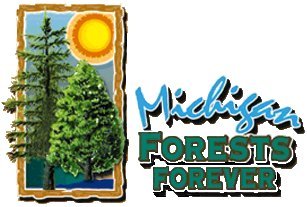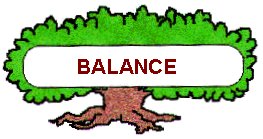

Home Page |
MICHIGAN FORESTS FOREVER TEACHERS GUIDE
| TREE DIVERSITY WITHIN
MICHIGAN FOREST TYPES |
 |
There are many ways to categorize differences within the forest. One of the more commonly used classifications is that implemented by the U.S. Forest Service in their Forest Inventory and Analysis Unit (FIA). In Michigan, there are over 60 forest types labeled according to their dominant tree species. These forest types have been categorized into 14 "associations" of similar ecological characteristics. Species diversity varies naturally between forest types and these associations. Human influence has also impacted species diversity and distribution. Tree species diversity may, or may not, reflect the diversity of all plant forms, but might serve well as a preliminary indicator. Lastly, the FIA figures are for each forest association on a statewide basis. Every stand of trees belonging to a particular forest type will not display the same level of diversity as the entire association. Geography, stand history, soils, water, and other factors create variability.
| Acreage and Number of Tree Species Recorded in the Forest Associations of Michigan | |||||
| Forest Type Group | Acres | #Species |
Forest Type | Acres | #Species |
Northern
Hardwoods |
5,138,303 |
47 |
Swamp Conifers |
1,050,050 |
23 |
| Source: FIA data, 2017 | |||||
The forest type association with the highest number of tree species is the mixed upland hardwoods, which is a broad association of many different forest types. Sixty-four tree species have been recorded within this association, the most common being red maple, white pine, black cherry, red pine, and quaking aspen. The mixed upland hardwoods tend to be mid-way along the process of forest succession, frequently with recent disturbance.
The forest associations with the least number of tree species are jack pine and upland conifers. These stands tend to be highly dominated by either jack pine or hemlock, respectively, each with about 20 associate tree species. Jack pine stands are strongly dominated by jack pine (63 percent of the volume). The upland conifer group has volume largely split between hemlock and white spruce.
The simple number of tree species is only one way of looking at diversity. The idea of "species richness" is important, too. Richness has to do with how dominant a few species are. For example, two stands may each have 1,000 trees of 25 tree species. In one stand, each species may have an equal number of trees, or 40 trees per species. This would be a species "rich" stand. The second stand may have 5 species that have 100 trees each, and the remaining 20 species have only 25 trees each. This stand would less "rich".
If we look at 13 Michigan forest type groups using a tree species richness measure, the most diverse forest type is mixed upland hardwoods (which is a mix of many forest types, often on highly disturbed sites). The least diverse groups would be red pine and jack pine.
| Tree Species Richness in Michigan Forest Types | ||
Forest Type |
Five Most Common Tree Species |
Percent Volume of Top Five Species |
Northern Hardwoods |
Sugar Maple, Red Maple, Basswood, Hemlock, Yellow Birch Quaking Aspen, Bigtooth Aspen, Red Maple, Balsam Fir, Cedar Red Maple, Silver Maple, Green Ash, Cedar, Black Ash N. Red Oak, Black Oak, White Oak, Red Maple, N. Pin Oak Red Maple, White Pine, Black Cherry, Red Pine, Quaking Aspen Cedar, Black Spruce, Balsam Fir, White Pine, White Spruce White Pine, Red Pine, Black Cherry, Red Maple, Hemlock Black Spruce, Tamarack, Balsam Fir, Cedar, White Pine Red Pine, White Pine, Jack Pine, Red Maple, Bigtooth Aspen Jack Pine, Red Pine, Black Spruce, Red Maple, White Pine Hemlock, White Spruce, White Pine, Red Maple, Cedar Scots Pine, Austrian Pine, Red Pine, Norway Spruce, N. Red Oak Cottonwood, Red Maple, American Elm, Black Willow, Black Cherry |
75 |
| Source: FIA data, 2017 | ||
Yet another way to look at forest tree diversity is the species distribution across different forest assciations. For example, sugar maple, beech, and basswood are largely restricted to northern hardwood stands. Red pine, jack pine, and cedar have a high fidelity to their respective forest types. They are far less commonly found in other forest types. On the other hand, most of the white spruce volume is not found in white spruce stands. And, red maple is found across multiple assocations, as is balsam fir, white spruce, paper birch, white pine, and black cherry. The following table shows how much volume of a particular species is found within its "typical" forest type group. Species with high percents may be good indicators of a single forest type. Species with low percents are not very good indicators, but have the ability to survive across a wide spectrum of site conditions and forest associates. This concept is commonly used with understory species, particularly wildflowers, that can be used to indicate certain site conditions and productivity in a "habitat classification" system. Wildflowers are frequently better indicators than trees.
| Forest Type Association Preferences for Common Michigan Tree Species (in order by volume) | |||||
| Species | Forest Type Group | Percent of
Volume in Forest Type Group |
Species | Forest Type | Percent of
Volume in Forest Type |
Sugar Maple |
Northern Hardwoods Mixed Upland Hardwoods Red Pine Cedar White Pine Oak-Hickory Aspen Aspen Mixed Upland Hardwoods Northern Hardwoods Northern Hardwoods Oak-Hickory Oak-Hickory Aspen Swamp Hardwoods |
94 |
White Spruce |
Upland Conifers Northern Hardwoods Northern Hardwoods Swamp Conifers Jack Pine Swamp Hardwoods Northern Hardwoods Cottonwood-Willow Northern Hardwoods Oak-Hickory Swamp Hardwoods Swamp Conifers Swamp Hardwoods Swamp Hardwoods Exotic Conifers Mixed Upland Hardwoods |
20 |
| Source: FIA data, 2017, for tree species with at least 100 million cubic of volume in Michigan. | |||||
 |
This website was developed and created by Michigan State University Extension for the teachers of the State of Michigan. |